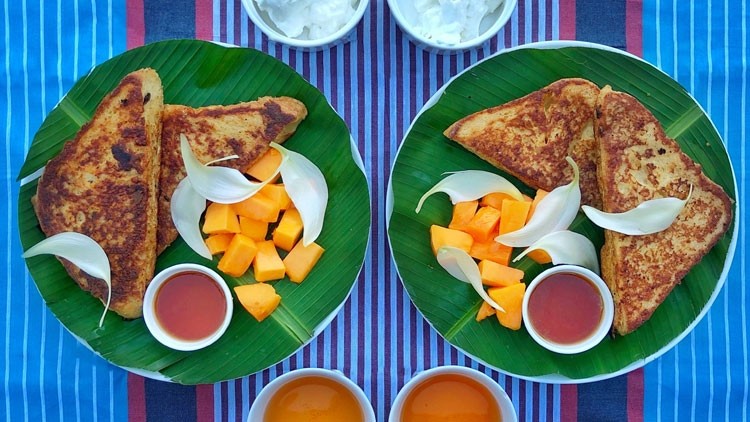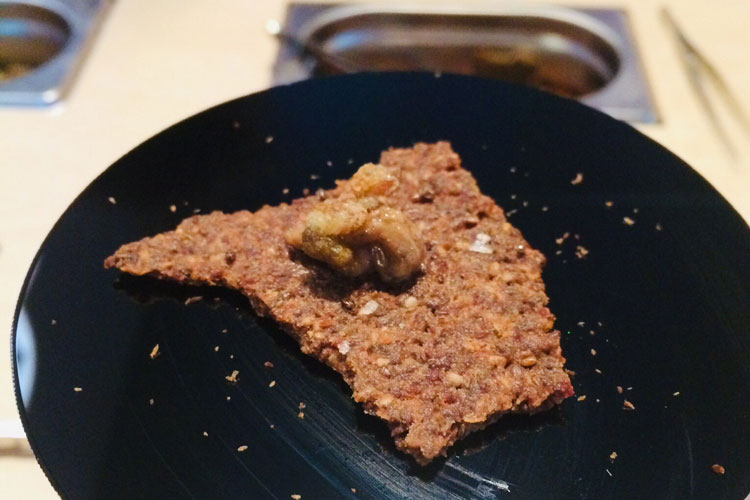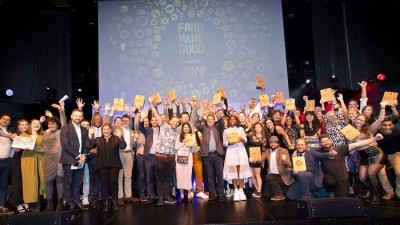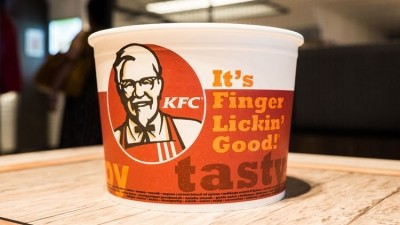Bigger than the Plate: inside the V&A's new food exhibition

“What we eat is one of the most important decisions we make every day,” reads the opening text panel of the V&A’s new food-focused exhibition, Bigger than the Plate. Yet as the proliferation of industrial farming techniques creates a growing distance between field and fork, our relationship with what we eat is becoming more detached. Many of us are unaware of where the food we eat comes from, or even how it is produced.
Attitudes are gradually changing, though. The mounting desire to develop a food system that is more sustainable, fair and delicious is something we see more and more not just in the hospitality sector, but in the wider public sphere. Animal rights activists such as Direct Action Everywhere are gaining more prominence; plant-based diets are becoming more popular; and the demand for sustainably-sourced produce is steadily rising.
Broken down into four sections – Compost, Farming, Trading, and Eating – Bigger than the Plate is designed to take visitors on a sensory journey through the food cycle, and consider how individuals, communities and organisations are reinventing how we grow, distribute and experience food. Here are the key things it addresses.
Industrial farming techniques
Central to the exhibition’s premise is the rise in intensive practices and industrial techniques that have come to dominate the agricultural landscape. A 13-minute cut of Nikolaus Geyrhalter’s 2005 documentary Our Daily Bread opens our eyes to the world of European industrial food production and high-tech farming; juxtaposing images of factory-farmed chickens effectively being harvested through a giant hoover, with shots of a mechanised assembly line for gutting fish and the mass processing of fruits and vegetables. It’s a confronting watch, but one that presents its subject without judgement. As the exhibition demonstrates, though, there are plenty of innovative open-source and social farming projects in development, including a pedal-powered Bicitractor that’s designed to support small-scale farming, and a working version of MIT’s Food Computer, which uses data to precisely replicate natural conditions and allow crops to grow in places they would not normally be able to.
Genomic gastronomy
The LOCI Food Lab is a travelling food stand for prototyping, serving and debating a range of bioregional food futures, created by the Center for Genomic Gastronomy. Here visitors can create their own bespoke bioregional canapé by picking three attributes they believe make a ‘great food system’ from a list of 16 choices. These include whether the food should be organic, biodiverse, or hyperlocal. From the attributes chosen, a bite-sized snack is then prepared using an acclimatised cracker of Essex chia seeds and British yellow peas as the base. For example, if a visitor were to select nutritious, affordable and wild as their three attributes, the cracker would be served with a wild spread of foraged English mushrooms and wild herbs; topped with crisped Essex barley and Somerset spelt; and dusted with dried anchovy dust. It may not sound (or look) particularly appetising, but what it reflects is important. As by correlating these individual choices, the Center for Genomic Gastronomy is then able to broaden the debate around bioregional food futures by showing what attributes we collectively believe are important to maintaining a sustainable food system.
Urban farming
One of the most innovative installations at the exhibition demonstrates how sustainably-sourced vegetables can be grown in the most unexpected ways. GroCycle’s Urban Mushroom Farm illustrates a circular economy by using waste coffee grounds, including those collected from the V&A Benugo café, as a compost base to grow oyster mushrooms that are then being harvested and used in select dishes served in the café.
Waste management
Everything, inevitably, comes back to what we excrete. Bigger than the Plate begins by examining the diverse number of projects in development that aim to create a more resilient food system by closing the nutrient loop, changing our perception of waste, and altering our collective ‘flush and forget’ culture. This includes a display of Merdacotta, which translates as ‘baked shit’ in Italian. Merdacotta is a material made from clay and cow excrement that was created by Italian farmer Gianantonio Locatelli, who wanted to find a use for the staggering 100,000kg of manure create by his herd of cows. As an aside: for anyone who wishes to purchase their very own cowpat plate, they’re available in the Bigger than the Plate gift shop.
Cheesy culture
The exhibition carries with it an impassioned seriousness that’s very much designed to engage its visitors on an emotional level, particularly about sustainability. But there’s also plenty of fun to be had, including the chance to see a selection of cheeses cultured from the bacteria samples of celebrities including Heston Blumenthal. The cheese production has been overseen by biodesigner Helene Steiner, Food Busker John Quilter and scientist Dr. Thomas Meany, and is based on an idea originally conceived in 2013 by smell researcher Sissel Tolaas and biologist and artist Christina Agapakis. Using microbiology techniques to grow starter cultures, Steiner and her team used fresh, pasteurized milk to the create five cheeses, with chef Quilter overseeing the intensive cheesemaking process at Open Cell in London’s Shepherd’s Bush. Great fun to gaze upon, but visitors will almost certainly be pleased to know they’re under no obligation to try the cheeses.
FOOD: Bigger than the Plate runs until 20 October. For more information and to book tickets, click here.















